Learn to do good.
Seek justice.
Reprove the ruthless.
Defend the orphan.
Plead for the widow. Isaiah 1:17
***
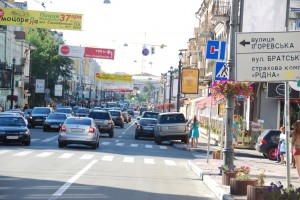 Commuting through the streets of Kiev in 1995, gynecologist Roman (“Roma”) Korniyko, MD, looked out the window of the electric tram onto the streets of Kiev into the faces of countless street children living there. He knew he could no longer just pass them by. He had to provide shelter for them.
Commuting through the streets of Kiev in 1995, gynecologist Roman (“Roma”) Korniyko, MD, looked out the window of the electric tram onto the streets of Kiev into the faces of countless street children living there. He knew he could no longer just pass them by. He had to provide shelter for them.
Street kids were everywhere. Most had fled abuse of all kinds. Some of their parents were dead from drug overdoses. Others were orphaned after the Mafia had killed their parents to take over an apartment in short supply in the near anarchy that arose after the end of Soviet control in 1991. Most had no official papers, and no connection to family. If they disappeared or died, no one knew.

Natasha and Roman Korniyko, MD
Roma and his wife Natasha set out to open an orphanage. But before resources for an orphanage would arrive, Roma and Natasha started with whatever facilities they could find, including housing children in their own home. They organized day establishments, rented classrooms, and rented apartments to bring children in off the street in the evening.
Roma and Natasha’s work was initially not well received by the government, such as it was. Officials beat Roma, and even jailed him. Police sought to plant drugs on him. They accused him of supposedly shaming the country about a problem the government denied existed.
Roma and Natasha persisted. A journalist learned of the crisis and the fledgling response to it. Public sentiment turned. In a reversal of public policy the Ukrainian president called on all Ukrainians to respond to this national public need. The government now regards Father’s House as a model for the country, and even contributes to its operation financially.
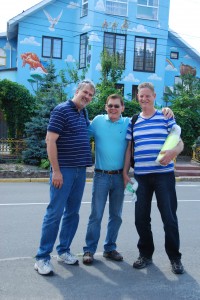
Duane, George and Bruce in front of Father’s House
Construction of Father’s House
Soon after Roma began working with children, in 1998, Bruce and Anne Elliott and their daughter Sarah began traveling regularly to Kiev to reach out to these same kids in crisis, and to work in the government’s shelter, and connected with Roma. Click here to read about that work and the Children’s Rescue Center.
A church in California’s Bay area purchased the shell of a large building in a village on the outskirts of Kiev. The Elliotts’ congregation in Vancouver, Canada paid for the finishing of the building which has now become Father’s House, or in Russian, Otchiy Dim.
In 2000 and beyond other churches from other countries began contributing resources. At first the local churches were slow to respond, but have now also become active supporters.
Group Home
The Father’s House facility serves 76 children. It is actually two facilities, with complimentary but separate functions, sharing a common yard.
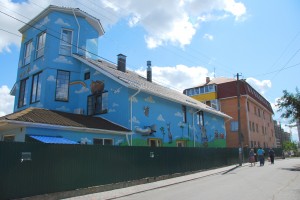
Father’s House. Group home is the blue building in the front. Apartments are the brick structure in the back.
The front, original blue structure is a group home for 40 children. Children brought into this facility have come directly off the street, and may not have known any other lifestyle. Rudimentary hygiene, social and living skills are unknown to them and must be taught. Their first night may well be the first time they are confronted with a bed with a sheet on it. Resorting to the familiar, they may remove the sheet before lying on the mattress, or just lay under the bed. The kids must be taught how to shower; they were used to being dirty.
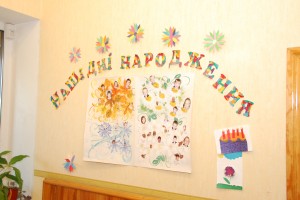
Board celebrating birthdays
Many of the kids arrive unaware they have a birthday. Father’s House makes a point of identifying and celebrating each child’s birthday, often for the first time.
Father’s House is warm and welcoming, from its basement storing winter clothes to its third floor dormitories. Between are a nurse’s office and dispensary, living rooms, and girls and boys’ dorm rooms grouped by age. Space is at a premium, but each child has a bed, desk and closet to call his or her own. The rooms are reminiscent of college dooms, but with approximately six to eight children in each room.
Father’s House includes a small classroom. The children attend the local public school. But many need remedial assistance and the classroom is used for that purpose.
A resident child psychologist is on staff. She has her work cut out for her to connect with kids with desperate histories. She has a well equipped room in which to meet with the kids, with dry sand, wet sand, hundreds of toy characters, stuffed animals, games and other resources to help communication and expression.
The doors are not locked at Father’s House. The kids come to Father’s House off the street voluntarily and are free to return there if that is their choice. That is rare, but it does happen.
One moving description of what happens at the Father’s House came in the craft room. One of the tasks the children are given is to go out into the streets, find trash or debris, and bring it back to make an artistic creation. The object lesson is that the children often see themselves as cast-offs and unwanted debris. Yet in the hands of their Creator they are being made into creations with beauty, meaning and purpose.
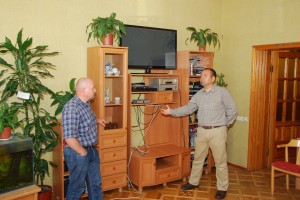
Roma explaining about the new TV, DVD and VCR, and the space where the units donated to the special needs children had been
The kids are also taken on a variety of excursions in the city. One trip was to a group home for special needs kids. The Father’s House kids saw the special needs home had no TV or VCR. They decided to give them theirs. Father’s House had been without a TV for 4 ½ months when they were visited by the wife of the British Ambassador to Ukraine. She brought with her a gift from children in England who had heard about the Father’s House, but didn’t know what it might need. On their own, 4 ½ months earlier and unaware of the Father’s House donation, the UK children had decided to give a TV, DVD and VCR player, now delivered by the Ambassador’s wife.
Summer Camp
The stay at Father’s House is usually nine months during the winter, and then three summer months at camp. The camp formerly was on an island in a large river in Kiev known as The Island of Treasures, named not for the island of debauchery in the story of Pinocchio, but to communicate to the children that they are all treasures.
The Island of Treasures is now closed, and the children attend camp in southern Ukraine on the Black Sea, on the peninsula of Crimea. The children were at camp during our visit in July, so the facility was mostly empty. (This is not the camp we will visit. We will travel to a different camp in northern Ukraine. More to come.)
Time at camp is not only recreational, but for spiritual and leadership training as well. The children are taught to be positive influencers, rather than to be influenced.
Apartments
The other facility at the Father’s House is a set of apartments constructed in just the past few years where approximately 36 children live. Each apartment is home to approximately 8 children and a married couple. This will introduce the children to the relational and social structure of family life. For many this may well be the first such experience. The goal is to prepare the children for adoption. They may stay in that family unit for one to three years.
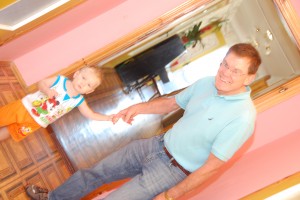 We met Nikita, and his Father’s House family. Nikita is age 2, and is HIV positive. Speaking of positive, there is none more so than Nikita. Full of energy and life, Nikita immediately claimed George as his best buddy. George taught him to punch, that is to bounce, a ball bigger than Nikita. Nikita lives with about 7 “brothers and sisters” up to about age 12, two of whom are naturally born to the house parents.
We met Nikita, and his Father’s House family. Nikita is age 2, and is HIV positive. Speaking of positive, there is none more so than Nikita. Full of energy and life, Nikita immediately claimed George as his best buddy. George taught him to punch, that is to bounce, a ball bigger than Nikita. Nikita lives with about 7 “brothers and sisters” up to about age 12, two of whom are naturally born to the house parents.
- Yard between group home and apartments
- Shoes of one apartment’s residents
- Nikita’s siblings
- Nikita and the ball
- Nikita and the ball
- Nikitia and house parents
While the apartments share a common building, and along with the group home a common yard, the children are intentionally not scheduled to be cared for in large groups. Rather the structure that is offered is that of an intact nuclear family.
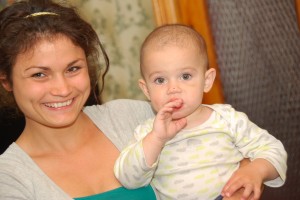 Sasha’s Story
Sasha’s Story
Sasha lived at Father’s House from age 8. She is now 28. You may remember Sasha’s story from the first post, an overview. If you missed it, it is worth reading and can be found here.
Christian Foundation
Father’s House does not describe itself as a religious organization, and all are welcome. Yet the spiritual teaching, training and modeling are Christian. The staff diligently pray for the kids. More than a safe living environment and social skills are offered. The kids are being welcomed, adopted, into their Heavenly Father’s family. Hence, it is their Father’s House.
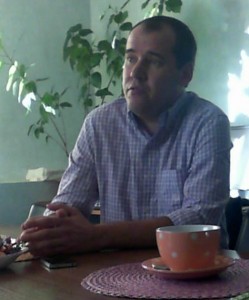 The Spread of the Work
The Spread of the Work
Father’s House started as a kind of prototype that has now been replicated in some 28 other orphanages across Ukraine, and has became a nationwide network and movement of Christians and churches known as Ukraine Without Orphans. Roma was head of the movement. Another staff member from Father’s House, Ruslan Maliuta, has became its head.
The Ukraine movement has now spread internationally to become World Without Orphans, with Ruslan Maliuta as its head. The movement has spread to 20 countries such as Kenya, Bangladesh, Venezuela, India and Nepal, and in the continents of Europe, Asia, Africa and South America.
World Without Orphans is a decidedly Christian organization that takes as its motivation God’s compassion for orphans and His commandments to care for them.
According to the World Without Orphans website, citing UNICEF, there are 150 million orphans in the world. If this was the population of a single country, it would be the world’s seventh largest. Many of these children do have families although they are still in need of support. World Without Orphans does not necessarily envision expansion of orphanages, which are sometimes detrimental, but to strengthen families and provide needed support.
We had the pleasure and honor of meeting in person with Ruslan Maliuta, just before he left for a conference in Kenya.
One of the realizations of World Without Orphans is that the work must be culturally contextualized for each locale. The idea is not to open offices, but to network with in-country workers. Another is that the work must be under-girded by the local churches. Literally now thousands of churches are involved including Roman Catholic, Orthodox and Evangelical.
Jesus told a parable, saying, “The kingdom of heaven is like a mustard seed, which a man took and sowed in his field; and this is smaller than all other seeds, but when it is full-grown, it is larger than the garden plants and becomes a tree, so that the birds of the air come and nest in its branches.” Matthew 13:31-32. This ministry to abused, abandoned and orphaned children is a living and ongoing example of this parable. The diligent initiative of just a few people 15 years ago, reaching out to one child at a time, has grown now an international movement with its aim of reaching millions of children throughout the world. Do not despise the day of small beginnings.
***
“He [reformer king Josiah] pled the cause of the afflicted and needy.
“Then it was well.
“Is this not what it means to know me?” Declares the LORD. Jeremiah 22:16
~~~








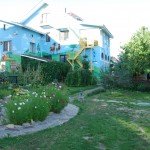
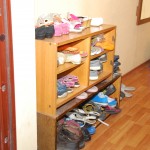
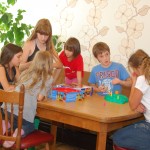
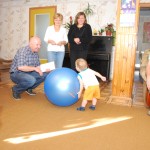
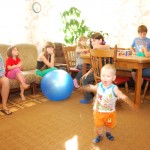
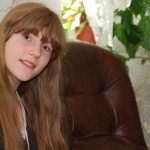
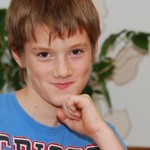
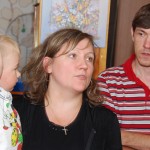
Good people fighting the Good fight. The world sometimes appears overwhelming but if you have faith you can do amazing things.
It never ceases to amaze me. Thanks Duane. 🙂